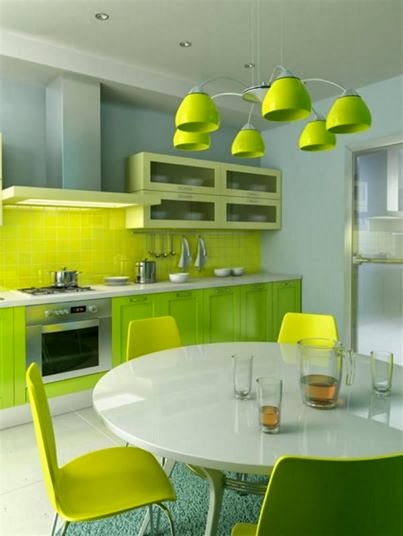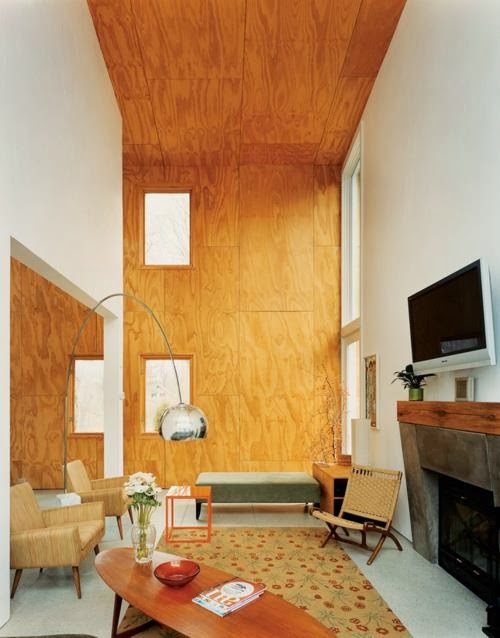MDF is manufactured by using wood species such as Rubber, Pine, Eucalyptus or Acacia. These species of wood are converted into wooden fibres which are then compressed under high temperature and pressure with synthetic resins. MDF is generally denser and stronger than particleboard and the fibres used to make MDF are much ifner. MDF boards are also available with various grades and types: (i) Interior Grade MDF, (ii) MR Grade MDF, (iii) One Side Prelaminated MDF and (iv) Both Sides Prelaminated MDF.
MDF may generally be used in the same applications as particle board. Because of its smoother texture, it can be cut, sanded, drilled, machined and filled without damaging the surface. MDF is produced in various grades like E2, El, MR, Shuttering Grade, etc. to meet a wide range of requirements related to performance and cost. The major areas of MDF usage are follows:
Hard Board & HDF
High Density Fibreboard (HDF) is made the same way as MDF but it is much harder and stronger. Hardboard may be even more dense and hard and is made by a wet process. Both are used in construction, flooring, furniture, door skins, home appliances, automobiles and cabinetry.
Oriented Strand Board (OSB):
Oriented Strand Board is manufactured in wide mats from cross-oriented layers of thin, rectangular wooden strips compressed and bonded together with wax and resin adhesives (95% wood, 5% wax and resin). The layers are created by shredding the wood into strips, which are sifted and then oriented on a belt or wire cauls. Most of the world's OSB is made in the United States and Canada.
OSB is used in furniture manufacture and construction. It has properties generally similar to plywood and has some advantages:
The major disadvantage of OSB is that it is more susceptible to deformation when exposed to moisture.
General Information on the Manufacturing Process
Plywood
Different types of plywood are manufactured from veneers cut from a wide range of timbers. For furniture applications, the surface veneers are normally selected to be relatively free from knots, stains or other defects according to the grading rules applicable to each type of veneer. The density of plywood is in the range of 500-900 kg/m'.
Particle Board
Particle boards of different types are manufactured from a range of cellulosic materials such as wood, flax and bagasse. The raw material is processed mechanically to produce particles of varying sizes. The particles are dried, mixed with a resin binder and then laid as a mat which is pressed at high temperature and pressure to form the board. Particle boards used by the furniture industry have densities generally in the range 550-750 kg/m3.
Just Call Toll Free-1800-102-2999 and Share MDF new article at Twitter and Facebook.
MDF may generally be used in the same applications as particle board. Because of its smoother texture, it can be cut, sanded, drilled, machined and filled without damaging the surface. MDF is produced in various grades like E2, El, MR, Shuttering Grade, etc. to meet a wide range of requirements related to performance and cost. The major areas of MDF usage are follows:
- Flush doors and panel doors
- All types of furniture and interiors
- Partitions
- False ceilings
- False flooring
- Kitchen cabinets, wardrobes
- Handicrafts
- TV cabinets, speaker boxes
- Bus and rail coach building
Hard Board & HDF
High Density Fibreboard (HDF) is made the same way as MDF but it is much harder and stronger. Hardboard may be even more dense and hard and is made by a wet process. Both are used in construction, flooring, furniture, door skins, home appliances, automobiles and cabinetry.
Oriented Strand Board (OSB):
Oriented Strand Board is manufactured in wide mats from cross-oriented layers of thin, rectangular wooden strips compressed and bonded together with wax and resin adhesives (95% wood, 5% wax and resin). The layers are created by shredding the wood into strips, which are sifted and then oriented on a belt or wire cauls. Most of the world's OSB is made in the United States and Canada.
OSB is used in furniture manufacture and construction. It has properties generally similar to plywood and has some advantages:
- OSB is generally squarer and has smaller dimensional tolerances.
- It can be manufactured into panels of up to 8' x 24, far larger than plywood.
- There are no soft spots such as those that can occur in plywood.
- OSB is made from smaller (often farmed) trees reducing the demand for old growth timber.
- OSB has greater shear strength than plywood; the span rating, nail pull and screw hold are all roughly the same.
The major disadvantage of OSB is that it is more susceptible to deformation when exposed to moisture.
General Information on the Manufacturing Process
Plywood
Different types of plywood are manufactured from veneers cut from a wide range of timbers. For furniture applications, the surface veneers are normally selected to be relatively free from knots, stains or other defects according to the grading rules applicable to each type of veneer. The density of plywood is in the range of 500-900 kg/m'.
Particle Board
Particle boards of different types are manufactured from a range of cellulosic materials such as wood, flax and bagasse. The raw material is processed mechanically to produce particles of varying sizes. The particles are dried, mixed with a resin binder and then laid as a mat which is pressed at high temperature and pressure to form the board. Particle boards used by the furniture industry have densities generally in the range 550-750 kg/m3.
Just Call Toll Free-1800-102-2999 and Share MDF new article at Twitter and Facebook.

 About the Author
About the Author RSS
RSS Like
Like Follow
Follow





0 comments: